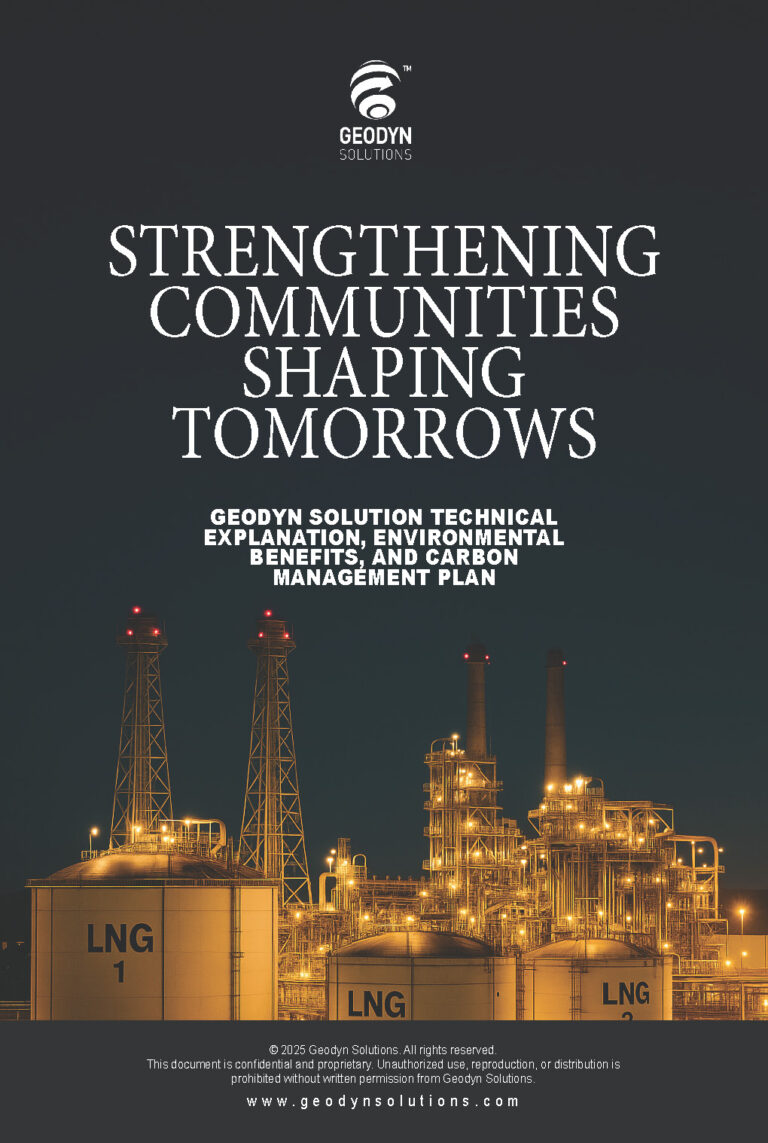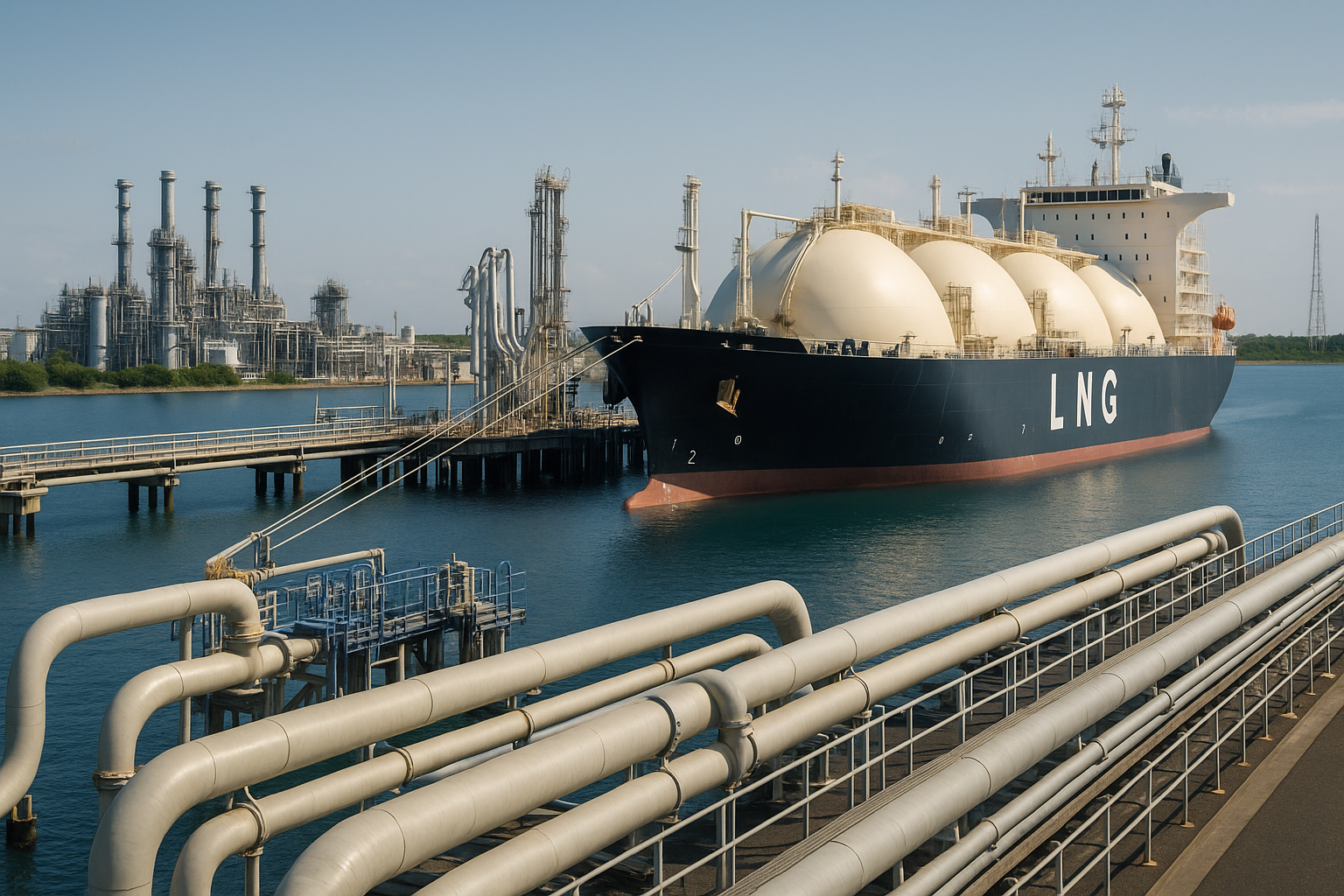Proposal for Deployment of a 250MW Mobile LNG Power Plant in the Dominican Republic
Executive Summary
Geodyn Solutions, a leading provider of mobile power plants, proposes to partner with its strategic statistical partner (specializing in data-driven optimization for energy projects) to deploy proprietary modular power generation technologies for a 250MW mobile power plant in the Dominican Republic. This initiative leverages Geodyn’s expertise in flexible, rapid-deployment energy systems to address the Dominican Republic’s growing energy demands, providing reliable interim power while supporting grid stability and economic growth.
The plant will utilize aeroderivative gas turbine technology for LNG or reciprocating engine modules for diesel, configured as trailer-mounted or containerized units for rapid deployment. For the LNG variant, the design incorporates a heat recovery steam turbine (HRST) for combined cycle operation and an Organic Rankine Cycle (ORC) system for additional waste heat recovery, boosting overall efficiency to approximately 58% while maintaining a total capacity of 250MW. The configuration is optimized by reducing the number of gas turbine units and leveraging HRST and ORC to achieve the target capacity with fewer base turbines, reducing capex while maximizing efficiency.
This proposal provides a comprehensive comparison of LNG and diesel options across key metrics: return on investment (ROI), operation costs, environmental impact, job creation, land requirements, deployment schedule, and payback period. It includes detailed capital expenditure (capex) breakdowns with a 20% contingency fund, revenue assumptions based on a power purchase agreement (PPA) rate of 17 cents per kWh (0.17 USD/kWh or 170 USD/MWh), and a 15-year return chart illustrating cumulative net profits.
Labor costs reflect the Dominican Republic’s market, with average annual salaries of approximately $7,200 USD for operational roles (based on local averages of $400-600 USD/month for skilled workers in the energy sector, including benefits), reducing opex compared to global benchmarks.
Based on the revised analysis with optimized enhancements, the LNG variant offers superior ROI (up to 63% annually), lower operation costs, reduced environmental impact, and faster payback, making it the recommended choice for alignment with the Dominican Republic’s energy goals.
Project Overview
The proposed 250MW mobile power plant will be deployed in a high-demand region, such as near Santo Domingo, to support grid stability amid increasing electricity needs driven by industrial growth, tourism, urbanization, and renewable integration. The LNG variant achieves 250MW through a reduced number of gas turbines (e.g., ~5 TM2500/LM2500 units at ~30 MW each for ~150 MW base), supplemented by ~75 MW from HRST and ~25 MW from ORC systems, totaling 250MW. Proprietary technologies from Geodyn include advanced fuel management systems, integrated monitoring for real-time performance optimization, modular designs for scalability and relocation, and emission controls. The HRST recovers high-temperature exhaust (~500-600°C) to generate steam, boosting efficiency to ~54%, while the ORC captures low-temperature heat (100-200°C) post-HRST, pushing total efficiency to ~58%, reducing fuel use by ~35% per MWh.
The statistical partner will provide AI-driven analytics to forecast demand, optimize fuel usage, and minimize downtime through predictive maintenance.
The plant can operate as a peaking or baseload facility, selling power under a PPA at 17 cents per kWh, competitive with regional market averages. Key assumptions include:
- Capacity factor: 70% (conservative for mobile units).
- Annual output: 1.533 million MWh (250 MW * 8760 hours/year * 70%).
- Annual revenue: 260.61 million USD (1.533 million MWh * 170 USD/MWh).
- Fuel prices (bulk, 2025 estimates in the Dominican Republic): LNG at 8 USD/MMBtu, diesel at 28 USD/MMBtu.
- Heat rates: LNG at 5,900 Btu/kWh (58% efficiency with HRST and ORC), diesel at 8,000 Btu/kWh (43% efficiency).
- Capital costs: LNG at 1,000 USD/kW (base 250 million USD total, optimized for fewer turbines with enhancements), diesel at 800 USD/kW (base 200 million USD total), with detailed breakdowns below.
- Other opex: Includes labor (DR rates at ~0.56 USD/MWh), insurance, and administrative costs at ~7 USD/MWh for both options.
- Discount rate for ROI and payback: 10% for time value of money.
- Project lifespan: 15 years, with potential for extension or relocation.
The plant will comply with local regulations, including environmental permits and grid interconnection standards, with features like noise reduction, advanced emission controls, and spill prevention.
- Detailed Capital Expenditure (Capex) Breakdown
Capex estimates are based on modular, off-the-shelf components, with HRST (15% added) and ORC (10% added) in the LNG variant, optimized by reducing gas turbine units (e.g., 5 vs. 7-8) to maintain 250MW with higher efficiency. A 20% contingency fund covers unforeseen costs like site preparation, regulatory delays, or supply chain issues. Breakdowns are as follows:
LNG Variant (Gas Turbine-Based with HRST and ORC, 250 MW)
- Equipment (turbines, generators, controls, HRST, ORC): 175 million USD (5 units plus enhancements at ~30-35 million USD each).
- Balance of plant (fuel systems, transformers, switchgear, heat recovery components): 50 million USD.
- Installation and commissioning: 30 million USD (including transportation and assembly).
- Engineering, permitting, and project management: 25 million USD.
- Base total: 280 million USD.
- 20% contingency fund: 56 million USD.
- Grand total capex: 336 million USD.
Diesel Variant (Reciprocating Engine-Based, 250 MW)
- Equipment (engines, generators, controls): 120 million USD (12-15 modules at ~8-10 million USD each).
- Balance of plant (fuel storage, exhaust systems, auxiliaries): 35 million USD.
- Installation and commissioning: 25 million USD.
- Engineering, permitting, and project management: 20 million USD.
- Base total: 200 million USD.
- 20% contingency fund: 40 million USD.
- Grand total capex: 240 million USD.
These costs reflect 2025 market rates, with savings from fewer turbines in the LNG variant.
Comparative Analysis
The following table summarizes the LNG and diesel options, revised with optimized enhancements and DR labor costs for optimal ROI.
| Metric | LNG Variant | Diesel Variant |
|---|---|---|
| ROI (Annual, Discounted) | 63% (based on net profit of 213 million USD/year after opex, on 336 million USD capex) | 45% (based on net profit of 108 million USD/year after opex, on 240 million USD capex) |
| Operation Cost | 25 USD/MWh (fuel: 13 USD/MWh; maintenance: 5 USD/MWh; other opex: 7 USD/MWh with DR labor) | 92 USD/MWh (fuel: 78 USD/MWh; maintenance: 7 USD/MWh; other opex: 7 USD/MWh with DR labor) |
| Environmental Impact | Lower emissions with CO2 ~0.98 kg/L fuel equivalent (37% reduction per MWh); 10% lower NOx, 88% lower PM, 100% lower SOx than diesel | Higher emissions with CO2 ~2.68 kg/L; elevated NOx, SOx, PM; higher spill risks |
| Job Creation | Construction: 800–1,000 temporary jobs (local hires at DR wages); Operation: 130–160 permanent jobs (~$7,200 USD/year average, including training in analytics and heat recovery systems) | Construction: 700–900 temporary jobs; Operation: 100–130 permanent jobs (~$7,200 USD/year average) |
| Land Requirement | 12–16 acres (compact design with space for HRST and ORC; includes fuel storage and access) | 10–15 acres (similar, but more for fuel tanks) |
| Deployment Schedule | 45–75 days from contract to operation (includes HRST/ORC integration) | 30–60 days (standard phased approach) |
| Payback Period | ~1.6 years (336 million USD capex recovered via 213 million USD annual net profit, undiscounted) | ~2.2 years (240 million USD capex recovered via 108 million USD annual net profit, undiscounted) |
ROI and Payback Calculations
ROI is calculated as (annual net profit / capex) × 100, using discounted cash flows at 10%. Annual revenue is 260.61 million USD (1.533 million MWh * 170 USD/MWh). For LNG, opex is 25 USD/MWh * 1.533 million MWh = 38.325 million USD, yielding 222.285 million USD gross; after depreciation/taxes (~10 million USD), net is 213 million USD. For diesel, opex is 92 USD/MWh * 1.533 million MWh = 141.036 million USD, gross 119.574 million USD, net 108 million USD after adjustments.
Payback is capex / annual net profit (undiscounted; discounted ~2.0-2.8 years). Sensitivity shows LNG superior due to efficiency gains.
15-Year Return Chart
The following table presents cumulative returns, assuming constant net profits (no escalation) and no reinvestment. Cumulative net profit is total returns net of capex. Figures in millions USD.
| Year | LNG Annual Net Profit (M USD) | LNG Cumulative Net Profit (M USD) | Diesel Annual Net Profit (M USD) | Diesel Cumulative Net Profit (M USD) |
|---|---|---|---|---|
| 1 | 213 | 213 | 108 | 108 |
| 2 | 213 | 426 (capex recovered) | 108 | 216 |
| 3 | 213 | 639 | 108 | 324 (capex recovered) |
| 4 | 213 | 852 | 108 | 432 |
| 5 | 213 | 1,065 | 108 | 540 |
| 6 | 213 | 1,278 | 108 | 648 |
| 7 | 213 | 1,491 | 108 | 756 |
| 8 | 213 | 1,704 | 108 | 864 |
| 9 | 213 | 1,917 | 108 | 972 |
| 10 | 213 | 2,130 | 108 | 1,080 |
| 11 | 213 | 2,343 | 108 | 1,188 |
| 12 | 213 | 2,556 | 108 | 1,296 |
| 13 | 213 | 2,769 | 108 | 1,404 |
| 14 | 213 | 2,982 | 108 | 1,512 |
| 15 | 213 | 3,195 | 108 | 1,620 |
Over 15 years, LNG yields ~3.195 billion USD in cumulative net profit, compared to 1.620 billion USD for diesel, driven by efficiency gains from HRST and ORC.
Implementation Plan
– Phase 1 (Days 1-15): Site selection, environmental assessments, permitting, and equipment mobilization.
– Phase 2 (Days 16-45): Installation of modules, electrical connections, fuel/emission infrastructure, HRST, and ORC systems.
– Phase 3 (Days 46-75): Testing, commissioning, grid integration, staff training on local labor standards and enhanced systems.
– Phase 4 (Ongoing): Operation with analytics for efficiency and performance optimization.
Geodyn will manage phases, ensuring safety, 50% local workforce, and community programs.
Risk Mitigation and Financing
Risks: Fuel volatility (hedged), delays (early stakeholder engagement), equipment issues (redundant modules). Financing: Project finance loans, equity partnerships. 20% contingency covers risks.
Recommendation and Next Steps
The LNG option with HRST and ORC, optimized for 250MW with fewer turbines, is recommended for superior ROI, lower costs, and reduced environmental impact. Contact Geodyn for feasibility study and PPA negotiations.




